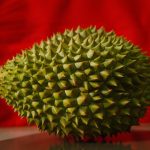To remove mildew stains and smells from outdoor fabrics, start by mixing equal parts vinegar and water to treat the stains. Scrub the affected areas using a sturdy brush, and rinse thoroughly. For persistent odors, wash fabrics in hot water with a strong detergent and white vinegar. After cleaning, air dry the fabrics in a sunny spot to kill remaining spores. Regular maintenance and specific mildew-resistant products can further help you keep your outdoor fabrics fresh. Discover more effective techniques to guarantee long-lasting results.
Table of Contents
Key Takeaways
- Use a vinegar solution (equal parts vinegar and water) to treat mildew stains on outdoor fabrics.
- Scrub stubborn stains with a sturdy brush and a mild detergent mixed with water.
- Wash fabrics in hot water with strong detergent and add white vinegar to eliminate odors.
- Dry fabrics in a sunlit area to kill mildew spores and ensure thorough drying.
- Store fabrics in a dry, well-ventilated space to prevent future mildew growth.
Understanding Mildew: Causes and Prevention
When you understand mildew, you can better prevent it from ruining your outdoor fabrics. Mildew thrives in damp, warm environments, often appearing when moisture settles on your items.
It’s essential to recognize that mildew doesn’t need sunlight; even shaded areas can foster growth if conditions are right. To combat mildew, you should regularly clean and dry your outdoor fabrics, especially after rain.
Proper storage is key—store items in a dry, well-ventilated space when not in use. Consider using waterproof covers to protect your furniture and cushions.
Additionally, investing in mildew-resistant fabrics can provide an extra layer of defense. By taking these proactive steps, you’ll minimize the risk of mildew and prolong the life of your outdoor textiles.
Identifying Mildew Stains on Outdoor Fabrics
Mildew stains can be tricky to spot on outdoor fabrics, especially if they blend with the material’s colors. To identify these pesky stains, look for dark patches or discoloration, often accompanied by a musty odor. Check areas that are frequently damp or shaded, as mildew loves moisture.
| Appearance | Location |
|---|---|
| Dark, fuzzy spots | Underneath cushions |
| Yellowish streaks | On edges of awnings |
| Greenish-black marks | In crevices of furniture |
Essential Supplies for Cleaning Mildew
To tackle mildew stains effectively, you’ll need the right supplies at your side.
Here’s a quick list of essentials to get you started:
- Mildew Cleaner: Choose a specialized cleaner or a vinegar solution to break down mildew.
- Scrub Brush: A sturdy brush helps lift stubborn stains from fabric fibers.
- Bucket: Use a bucket to mix your cleaning solutions and hold water for rinsing.
- Protective Gloves: Keep your hands safe and clean while handling cleaning products.
Having these supplies ready will make the process smoother and more efficient, ensuring you can focus on restoring your outdoor fabrics to their former glory.
Don’t forget to gather everything before you start!
Step-by-Step Guide to Removing Mildew Stains
To tackle mildew stains effectively, you first need to identify where they’re lurking on your outdoor fabrics.
Once you’ve pinpointed the problem areas, you can explore various cleaning solutions that will do the job.
Finally, mastering proper drying techniques will help prevent future mildew growth.
Identify Mildew Stains
How can you tell if those unsightly spots on your outdoor fabrics are mildew stains? Identifying mildew is essential for effective treatment. Here are some signs to look for:
- Color: Mildew typically appears as black, green, or gray spots.
- Texture: It often has a fuzzy or powdery surface, distinct from dirt or dust.
- Location: Mildew thrives in damp, shaded areas, so check spots that stay wet.
- Odor: If you notice a musty smell, it’s likely mildew is present.
If you spot these signs, it’s time to act.
The sooner you identify and address mildew stains, the easier it’ll be to restore your outdoor fabrics to their original state.
Cleaning Solutions Options
When it comes to tackling mildew stains on outdoor fabrics, you’ve got several effective cleaning solutions at your disposal.
Start with a mixture of water and white vinegar in equal parts. Spray this solution directly onto the stained area, letting it sit for about 30 minutes.
For tougher stains, try a solution of water and mild detergent, scrubbing gently with a soft brush.
Alternatively, a baking soda paste (mix baking soda with water) can work wonders—apply it to the stain, let it dry, and then brush it off.
If you prefer commercial cleaners, look for those specifically designed for mildew removal.
Always test any solution on a hidden area first to guarantee it won’t damage the fabric.
Proper Drying Techniques
Once you’ve treated the mildew stains, proper drying techniques are essential to prevent any lingering dampness that could lead to further growth.
Follow these steps to guarantee your outdoor fabrics dry effectively:
- Use a Sunlit Area: Lay your fabric flat in direct sunlight, as UV rays help kill mildew spores.
- Guarantee Good Airflow: If possible, hang the fabric to allow air circulation, speeding up the drying process.
- Check for Dampness: After a few hours, check for any remaining moisture. If it’s still damp, give it more time in the sun.
- Store Properly: Once completely dry, fold or store the fabric in a cool, dry place to prevent future mildew issues.
Dealing With Mildew Odors: Effective Solutions
Although mildew odors can linger stubbornly on outdoor fabrics, you can effectively eliminate them with the right approach.
Start by washing the fabric in hot water using a strong detergent, as heat helps break down the mildew. Add a cup of white vinegar to the wash cycle; it’s great for neutralizing odors.
After washing, let the fabric air dry in the sun, as sunlight acts as a natural deodorizer. If the smell persists, consider using a fabric refresher spray designed to combat mildew.
You can also try soaking the fabric in a solution of water and baking soda for a few hours before washing again.
With these steps, you’ll have fresh-smelling outdoor fabrics in no time!
Natural Remedies for Mildew Removal
If you’re looking for effective ways to tackle mildew on outdoor fabrics, natural remedies can be your best allies.
Here are four simple methods you can try:
- Vinegar Solution: Mix equal parts white vinegar and water, spray it on the affected area, and let it sit for about an hour before rinsing.
- Baking Soda Paste: Combine baking soda with water to create a paste. Apply it to the mildew stains, scrub gently, and rinse thoroughly.
- Lemon Juice: Squeeze fresh lemon juice directly onto the stains and let it sit in the sun for a natural bleaching effect.
- Tea Tree Oil: Mix a few drops of tea tree oil with water, spray it on the mildew, and leave it to dry; its antifungal properties work wonders.
Try these remedies for a fresher look!
Machine Washing vs. Hand Cleaning: What to Choose
When deciding between machine washing and hand cleaning outdoor fabrics, which method offers the best results?
Machine washing is often quicker and more efficient, especially for larger items like patio cushions or umbrellas. It can tackle tough mildew stains with the right detergent and settings.
However, if your fabrics are delicate or have embellishments, hand cleaning might be a safer option. With hand cleaning, you can control the amount of pressure applied, ensuring you don’t damage the material.
For delicate fabrics or those with embellishments, hand cleaning offers a gentler, more controlled approach to avoid damage.
Plus, it allows for a more thorough spot treatment on stubborn stains. Ultimately, your choice depends on the fabric type and your comfort level with each method.
Weigh the pros and cons before diving into the cleaning process.
Drying and Protecting Your Fabrics Post-Cleaning
After you’ve cleaned your outdoor fabrics, proper drying and protection are key to maintaining their condition. Here’s how to guarantee they stay in great shape:
- Air Dry: Hang your fabrics in a well-ventilated area, avoiding direct sunlight, which can fade colors.
- Check for Moisture: Confirm fabrics are completely dry before storing to prevent mildew from returning.
- Use Fabric Protector: Apply a water-repellent spray specifically designed for outdoor fabrics to enhance durability.
- Store Properly: When not in use, fold and store your fabrics in a dry, cool place, preferably in breathable storage bags.
Taking these steps will help prolong the life of your outdoor fabrics and keep them looking fresh and clean.
Tips for Maintaining Mildew-Free Outdoor Fabrics
To keep your outdoor fabrics mildew-free, establish a regular cleaning schedule to remove dirt and moisture.
When not in use, store your fabrics properly to prevent dampness and mold growth.
Additionally, consider using mildew-resistant products to give your fabrics extra protection against unwanted stains.
Regular Cleaning Schedule
Establishing a regular cleaning schedule can greatly help keep mildew at bay on your outdoor fabrics.
By staying consistent, you’ll protect your investment and guarantee your outdoor space remains inviting.
Here are some tips to help you maintain a mildew-free environment:
- Weekly Wipe Down: Use a damp cloth to wipe surfaces and remove any moisture or debris.
- Monthly Deep Clean: Wash your outdoor fabrics with mild soap and water to eliminate dirt and mildew spores.
- Inspect Regularly: Check for signs of mildew or water accumulation at least once a month.
- Adjust Location: If possible, move furniture or cushions to a sunnier spot to help them dry out more quickly.
Proper Storage Techniques
When you store outdoor fabrics properly, you can considerably reduce the chances of mildew growth.
First, verify your fabrics are completely dry before storing them. Moisture is a primary culprit for mildew, so letting them air out in the shade is essential.
Next, fold or roll the fabrics neatly to avoid creases that can trap moisture. Use breathable storage bags or containers; avoid plastic, as it can create a humid environment.
Keep your storage area cool, dry, and well-ventilated, steering clear of damp basements or attics. Additionally, consider placing silica gel packets or activated charcoal in your storage space to absorb excess moisture.
Following these techniques will help maintain your outdoor fabrics in pristine condition and mildew-free.
Use Mildew-Resistant Products
Proper storage techniques set the stage for maintaining your outdoor fabrics, but using mildew-resistant products takes your protection a step further.
These products help create an environment that’s less hospitable to mildew. Here are some tips to evaluate:
- Choose Fabrics Wisely: Opt for outdoor fabrics specifically labeled as mildew-resistant.
- Apply Protectants: Use sprays or treatments designed to repel moisture and inhibit mold growth.
- Regular Cleaning: Wash your outdoor fabrics periodically with mildew-fighting detergents to remove any potential spores.
- Store Properly: When not in use, keep your fabrics in a dry, cool place, preferably in a breathable storage bag.
Frequently Asked Questions
Can I Use Bleach on Colored Outdoor Fabrics?
You shouldn’t use bleach on colored outdoor fabrics, as it can cause fading and discoloration. Instead, opt for color-safe cleaners specifically designed for outdoor materials to preserve their vibrant hues while effectively cleaning them.
How Often Should I Clean My Outdoor Fabrics?
Did you know that 80% of outdoor fabric damage happens in just one season? You should clean your outdoor fabrics at least twice a year to maintain their appearance and durability while preventing any unpleasant odors or stains.
What Happens if Mildew Isn’t Removed Completely?
If you don’t remove mildew completely, it can spread, causing further damage to your fabrics. You’ll notice persistent odors and stains, and your items may deteriorate faster, leading to costly replacements or repairs.
Are There Specific Fabrics More Prone to Mildew?
Some fabrics, like cotton and polyester, absorb moisture easily, making them prime candidates for mildew. Meanwhile, materials like canvas and acrylic can trap humidity, inviting mold. You’ll want to be cautious with these types.
Can Mildew Stains Return After Cleaning?
Yes, mildew stains can return after cleaning if moisture remains. To prevent this, make certain you dry fabrics thoroughly, store them in a dry place, and use mildew-resistant treatments for added protection against future growth.
- How to Work With Metallic and Crinkle Gauze Fabrics - June 15, 2025
- Cross-Stitching on 40-Count Silk Gauze: A Guide for Advanced Crafters - June 15, 2025
- What Is Gossamer? a Guide to Very Light, Sheer, Gauze-Like Fabrics - June 15, 2025







